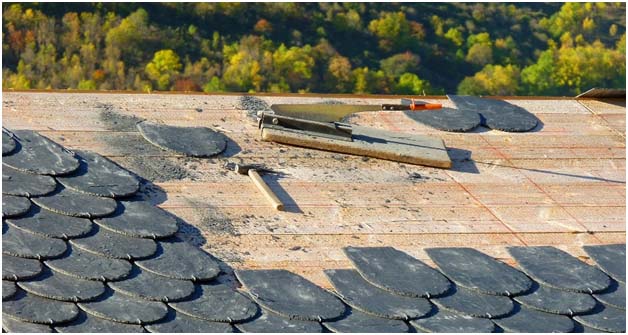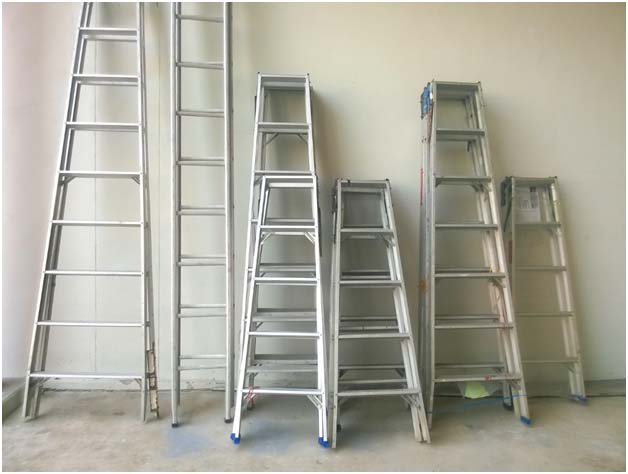Roofing projects don’t offer as much glamour as other home improvement projects, but it’s important to maintain from time to time. Homeowners may choose to complete small repairs, such as cracked flashing or a missing shingle themselves. These are easy projects to do but require some skill.
Before you get on the roof for that small fix, you should be aware of the safety risks associated with roof projects. Even if you have a one-story home, there’s still plenty that could go wrong that could harm you or damage your home. Here are a few roof safety basics to know before you get started on your next repair.
Some roofing repairs require additional expertise. Contact a roofing contractor today for up to four quotes from pros in your area for free.

Roof Repair Costs
A leak or visible damage is a sure sign your roof needs a repair. One of the most difficult parts is finding the source of the damage and then determining the right repairs to make. If you catch the problem early, the less you’ll be spending down the road. The average cost to repair a roof is $654, with most homeowners spending between $376 and $695.
Weather impacts the state of our homes. A severe storm can mean a simple shingle replacement or repair to larger damage caused by hail or wind. While a shingle replacement is certainly something that can be DIYed, other damage repair might call for a professional to properly repair the damage. The average cost to repair storm or wind damage is $5,370, with most homeowners spending between $2,801 and $5,534.

Ladder Safety
In order to repair your roof, you have to find a way to the source. Ladders are the obvious choice in most cases. According to the CDC, falls are the leading cause of unintentional injury nationwide. In fact, 43% of fatal falls involve a ladder for those on the job. This is important for homeowners to be aware of as they DIY. Ladder safety should be taken very seriously. Here are a few ladder safety tips to keep in mind:
- Always be sure your ladder is on level ground.
- Use a properly sized ladder to reach your roof safely; a ladder that’s too short is dangerous.
- A roof ladder hook will ensure that your ladder is secure.
- Follow the 4-to-1 ladder rule.
- Keep three points of contact with the ladder at all times.
Working on A Roof Safely
When you’re working on the roof, there are a myriad of factors that impact safety. One of them is weather conditions. Never work on a roof if there is a storm coming in. Lightning is an obvious hazard, but a serious one. It’s unpredictable, but those working on a roof are at a higher risk. According to the National Oceanic and Atmospheric Administration, lighting can strike 10 miles away from any rainfall area. Part of the danger for those working on a roof is that they get back to work too soon. The NOAA recommends staying indoors at least 30 minutes after the storm has passed. However, rain can make the roof slippery, increasing your falling risk. It’s best to avoid your roofing project on a day that it has stormed, and save it for nicer weather.
As we’ve already addressed, another roofing safety risk is a fall. By having the right equipment, you can protect yourself from any injury and reduce your risk of a slip. Having a safety harness can be your first line of defense. These can be found at most home improvement stores and costs between $30 - $50 depending on the style you choose. Most come with instructions specific to the brand. You’ll also need a roof bracket, anchor and rope to ensure safety.
Some other roof safety tips to decrease your risk of a fall are:
- Installing a roof plank
- Wear shoes with a rubber sole
- Try to work with another person if possible
- Avoid working on wet roofs
- Always be aware of your surroundings
When To Call A Roofing Contractor
While there are some roofing projects you can DIY, most should be left to a professional. This is especially true if you have a very steep roof. It’s best to not risk injury and let roofing contractors handle the job.
If you have any fear of heights, this is also a job you’ll want to leave to a roofing contractor, regardless of how big or small the project is. While you may think you can overcome this fear, a roofing project is no place to test out this theory. Nervousness and anxiety can result in senseless errors that can cause an accident. It’s smart to contact a roofing pro who can handle this.
Finally, not everyone has the roofing expertise needed. If you have a leaky roof or a damaged roof, you may not solve the problem with a simple DIY fix. In fact, you may cause your home more harm than good. A roofing pro can help diagnose the issue and solve it, resulting in less damage and more money in your wallet.
Conclusion
If you’re planning a DIY roofing project, always consider roof safety first. Consider the project you’ll be doing and what safety precautions you should take to make it successful. When in doubt, always contact a roofing pro.



















Your Message